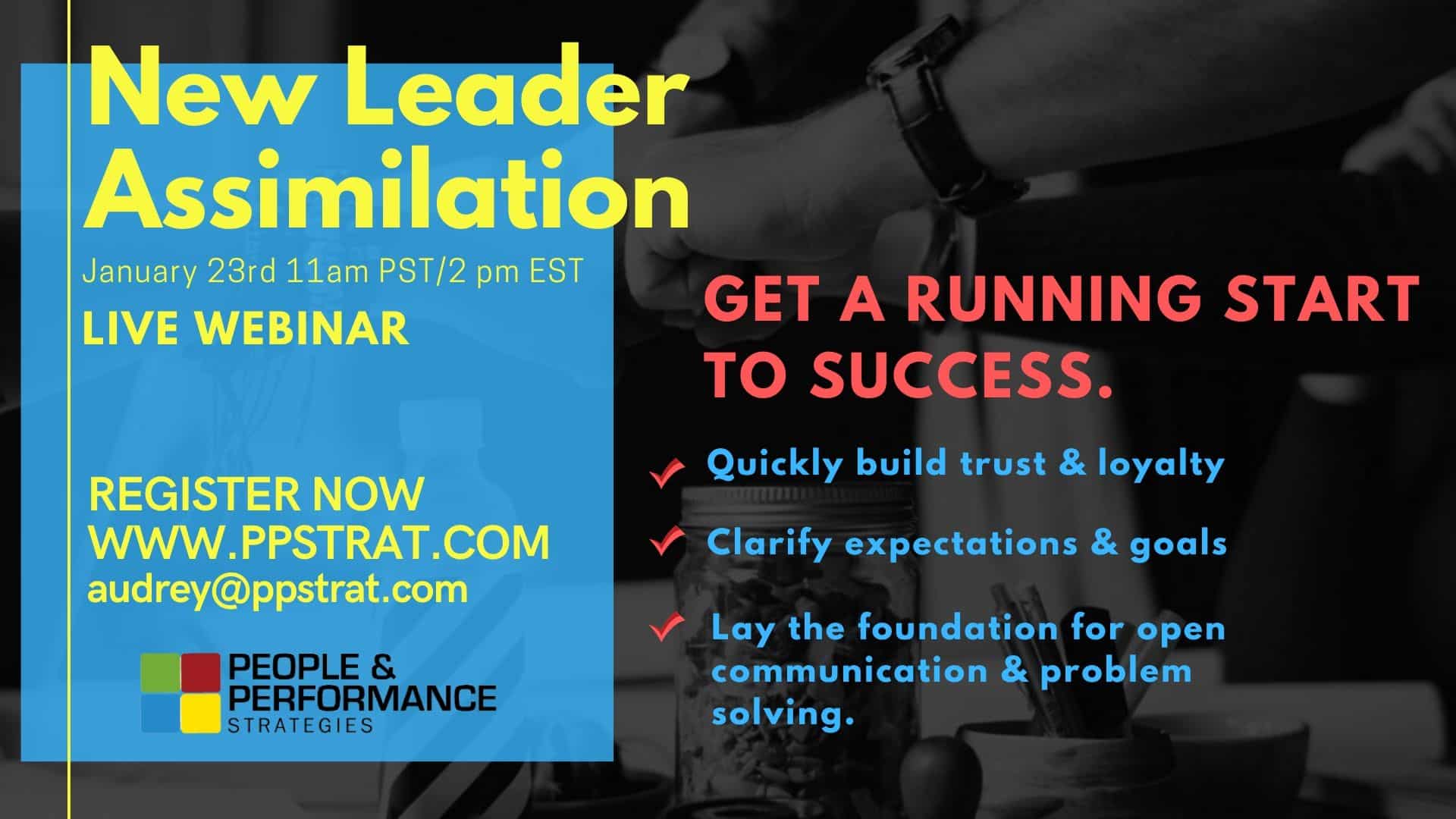
You wouldn’t hire a new leader with loads of experience and capacity to work half days for the whole first year, would you? Well, that’s essentially the level of productivity you’ll get from your new leader if you don’t take the time to integrate them into the organization at the beginning. A Harvard Business Review study found that effectively integrating new leaders into their roles immediately after hiring them reduced their time ramping to full capacity by one third, from six months to four.

Most organizations assume that high caliber leaders with reputations for producing results don’t need much help or training after they join a new team. It’s assumed the new leader knows enough to have produced admirable results before joining your company or being promoted to the new position in your company. The general consensus, going back to a familiar saying is, “If it’s not broken, there’s no need to fix it.”
But new leaders face a set of unique challenges that have nothing to do with their level of expertise or their reputation. The biggest challenge comes when he or she enters a new group they don’t know, and the group doesn’t know their new leader. There’s a vacuum of unfamiliarity that exists when a new leader assumes the position. If no effort is made to fill the vacuum with accurate and actionable data, the leader and the team will begin filling it with their own assumptions. Most of the time this results in confusion, misunderstandings, low morale, frustration, and slower productivity. How can a new leader get much done when they’re disoriented in a new environment and struggling to communicate with people they don’t know?
fThat’s where New Leadership Assimilation can change everything. It goes beyond onboarding, which is really just filling out paperwork and going through policies and procedures.
Joleen Goronkin, President of People & Performance Strategies, explains, “New Leader Assimilation is a step-by-step process or plan that organizations can include as a fundamental part of bringing in a new leader, either from the outside or within. It’s a process of getting to know each other that can reduce time and money as your new leader gains speed, and sets them up to impact their team in the best way possible as everyone begins to operate at full potential. We’re seeking to maximize effectiveness by maximizing the relationship between the leader and the team.”
People & Performance Strategies has provided some of the nation’s most forward-thinking companies with a road map to conduct successful New Leader Assimilation meetings that change the game when it comes to powering up a new leader.
Julie Rivera is Vice President of Human Resources for Jim N’ Nick’s Bar-B-Q, a Barbeque chain with 41 locations across seven states. She has deployed the new leader assimilation process in a variety of ways, not only introducing new leaders but also introducing new teams to one another to ensure excellent productivity and service.
Julie says, “People work better when they understand one another. We use an assimilation process in the field when a new restaurant opens and a new team comes together.”
In a world where more project teams are coming together from different places and backgrounds, especially when joining together virtually, as many teams within technology companies do, it’s the teams that have benefited from going through an initial assimilation process that helps them work more effectively together. Everyone benefits from open communication right out of the gate.
During Jim N’ Nick’s Bar-B-Q assimilation events, employees spend two hours in a question and answer facilitated session with their leader and another 2-hour session reviewing individuals’ (leader included) DiSC reports.

New Leader Assimilation webinar - 1/23,11pst
Ask questions and learn how to make New Leader Assimilation real for your organization. REGISTER TO ATTEND
Goronkin says, “DiSC training is not essential to an assimilation process, but doing this type of communication training using Everything DiSC can unlock the assimilation process’s true potential. When individuals take the DiSC assessment, they receive a personalized report that helps them understand their communication style. They learn how they can maximize their unique strengths and the strengths of people that have other communication styles. The comparison reports can be a wonderful tool to show employees and the new leader exactly where they should pay attention so that effective communication happens between them.”
Rivera says, “We’ve received great feedback from location managers and have realized the value of doing an assimilation as General Managers have started doing the assimilation process as they joined restaurants. There have also been cases when a multi-unit leader comes to us saying that it feels like something is off with the team in terms of relationships, and we have run the program as a restorative approach. Often it comes down to the fact that they actually haven’t taken the time to get to know each other. In four hours, everyone learns great things and make a lot of progress.”
If there’s time, Rivera recommends holding the event off-site, away from employees’ typical work environment. Then give them time to go have a meal together to socialize and practice communicating.
Assimilation is more than just the event, however. For the meeting to run smoothly and provide the benefits you’re after, there is some prep work to be done on the side of the leader. For one, you’ll want to coach them on their responses. It can be a hard pill to swallow when leaders come face-to-face with questions about their character or their intentions. It helps to collect questions in advance and provide them to the new leader prior to the event. Give the new leader plenty of time to process the questions, then spend some time advising them on how to respond effectively to the questions posed.
Rivera says, “I’ve held assimilation events in other organizations without prior preparation, and those were still beneficial, but I’ve found that prepping and coaching the leader helped improve the quality of the conversation. It can help to keep everyone’s attention and get the most out of the time during the event.”
As a leader who’s gone through the process herself, Rivera liked having time to process thoughts and concerns.
When a new leader joins your ranks, or when you’ve brought together a new team of individuals to do something great together, you might have the urge to dive into the work ahead as quickly as possible. Taking time in the beginning to solidify your foundation can eliminate problems and inefficiencies down the road. Making new leader and new team assimilation a fundamental part of your forward movement will speed up your progress and help everyone reach their maximum effectiveness.
